Paramount Theatre / Long Island University, Brooklyn Campus)
385 Flatbush Avenue Extension at DeKalb Avenue
New York City: Brooklyn, NY
Images
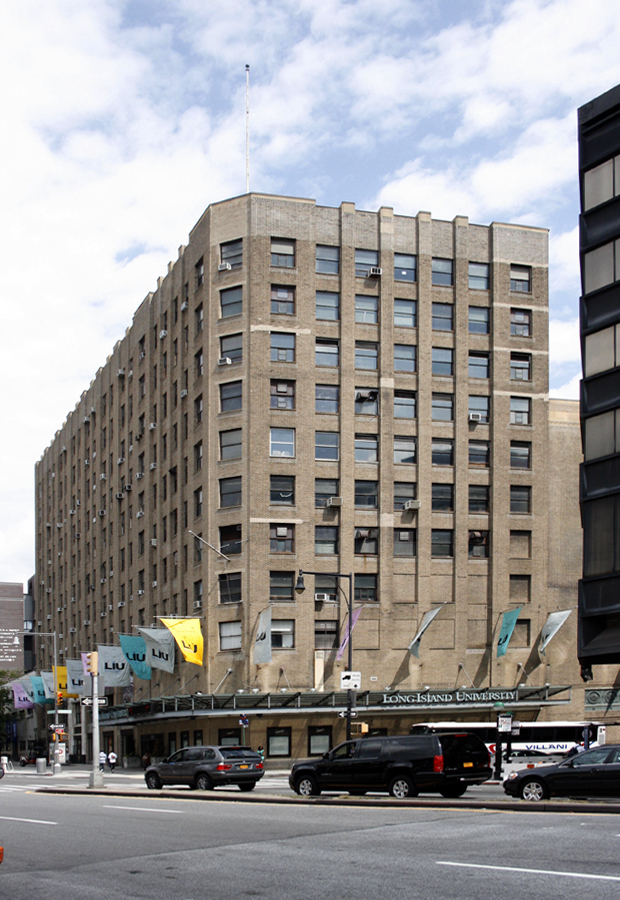 2012-08-20 - Building exterior (Photograph by Steven E. Lawson via the NYC AGO Organ Project, submitted by Jeff Scofield/Jeff Scofield)
2012-08-20 - Building exterior (Photograph by Steven E. Lawson via the NYC AGO Organ Project, submitted by Jeff Scofield/Jeff Scofield)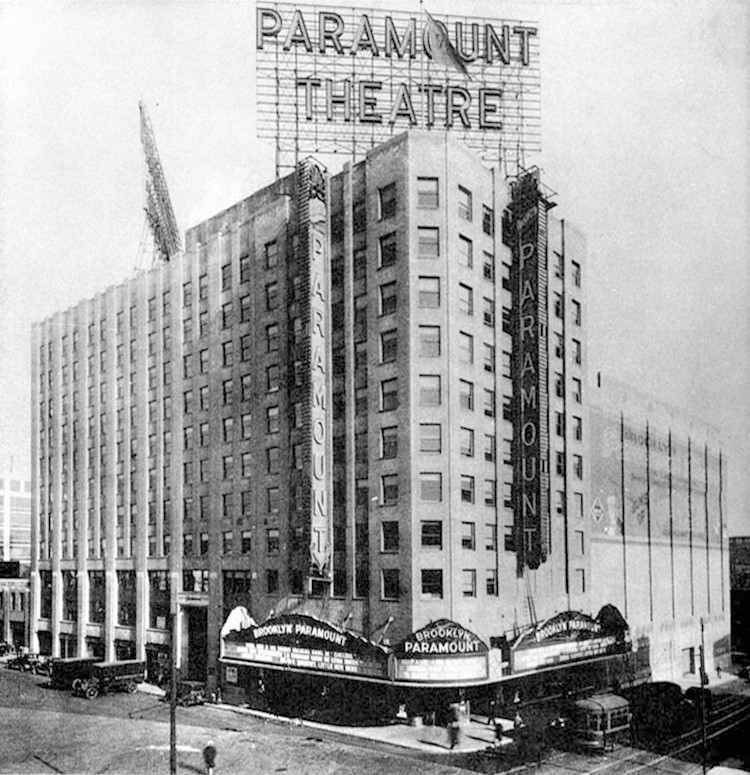 1928 - 1928 exterior, with theatre to right of the office tower (Photograph by "Cinema Treasures" via the NYC AGO NYC Organ Project, submitted by Jeff Scofield/Jeff Scofield)
1928 - 1928 exterior, with theatre to right of the office tower (Photograph by "Cinema Treasures" via the NYC AGO NYC Organ Project, submitted by Jeff Scofield/Jeff Scofield)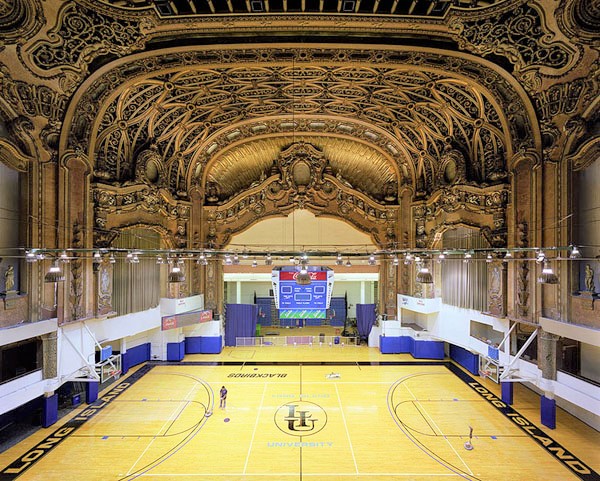 2008-07-23 - Hall interior (Photograph by Flavorwire via the NYC AGO NYC Organ Project, submitted by Jeff Scofield/Jeff Scofield)
2008-07-23 - Hall interior (Photograph by Flavorwire via the NYC AGO NYC Organ Project, submitted by Jeff Scofield/Jeff Scofield)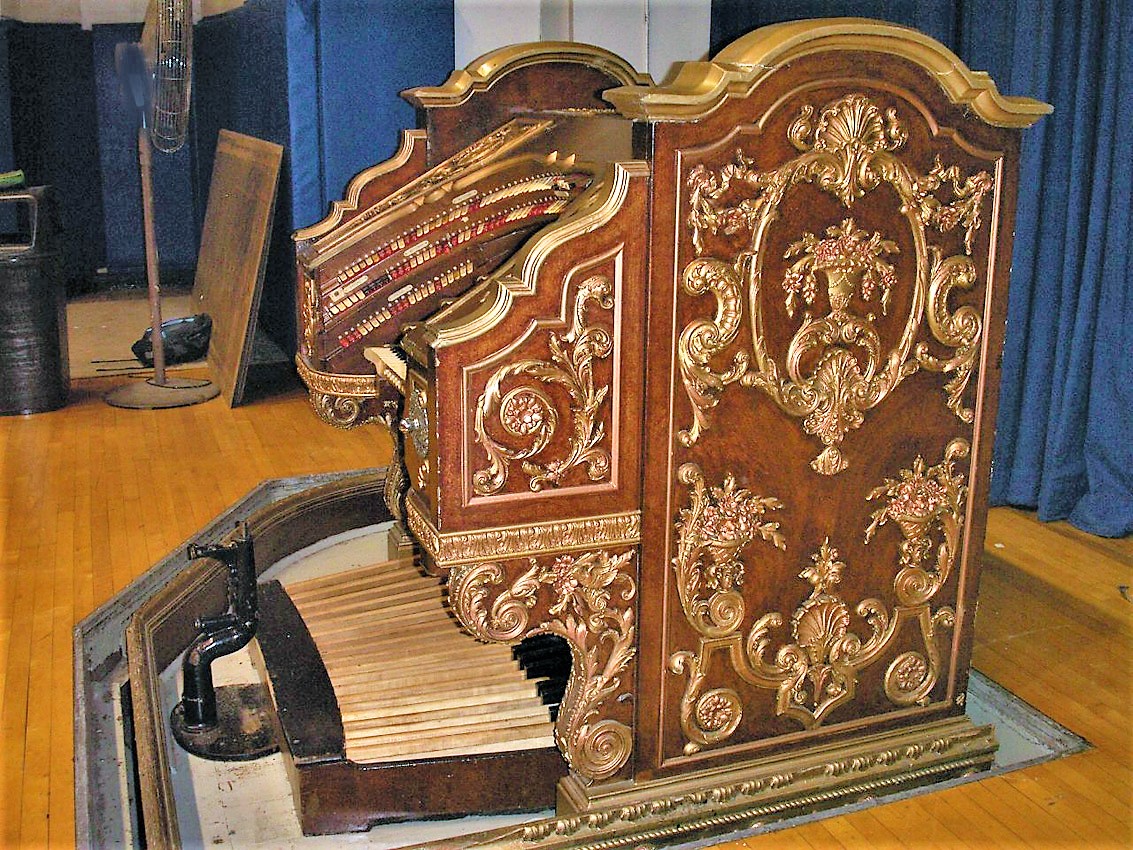 2007-11-01 - Console side view (Photograph by New York Theatre Organ Society via the NYC AGO NYC Organ Project, submitted by Jeff Scofield/Jeff Scofield)
2007-11-01 - Console side view (Photograph by New York Theatre Organ Society via the NYC AGO NYC Organ Project, submitted by Jeff Scofield/Jeff Scofield)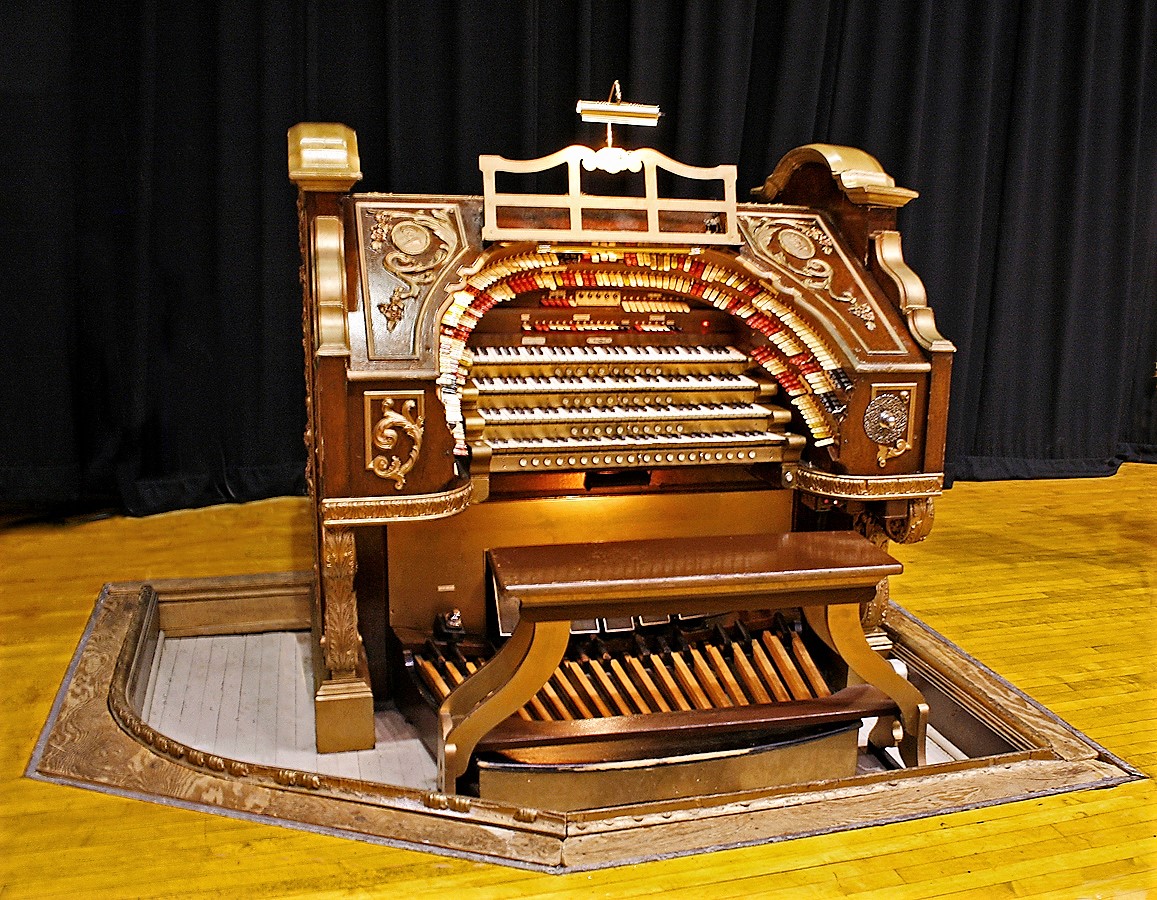 2012-08-18 - Console (Photograph by Steven E. Lawson via the NYC AGO Organ Project, submitted by Jeff Scofield/Jeff Scofield)
2012-08-18 - Console (Photograph by Steven E. Lawson via the NYC AGO Organ Project, submitted by Jeff Scofield/Jeff Scofield)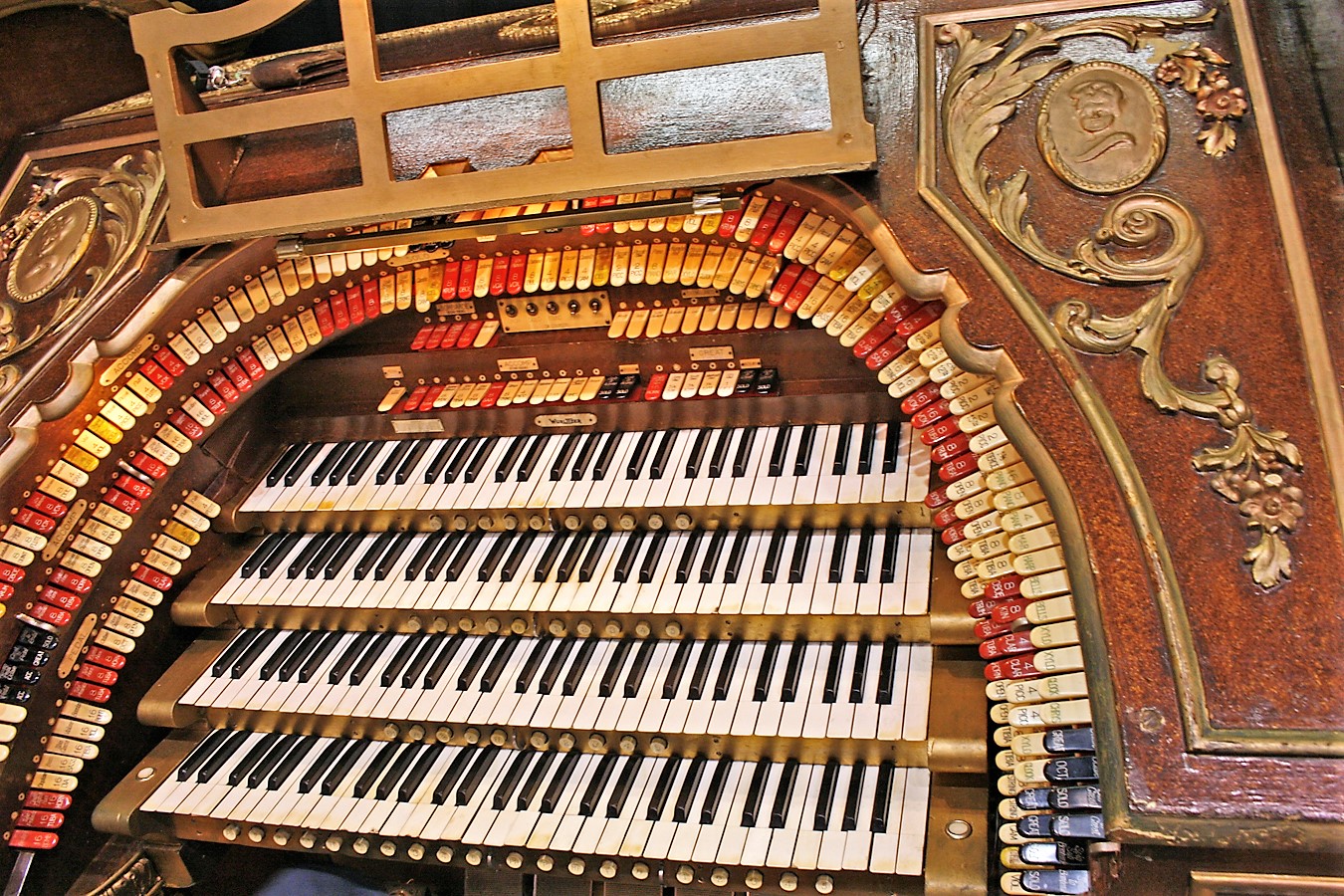 2012-08-18 - Console (Photograph by Steven E. Lawson via the NYC AGO Organ Project, submitted by Jeff Scofield/Jeff Scofield)
2012-08-18 - Console (Photograph by Steven E. Lawson via the NYC AGO Organ Project, submitted by Jeff Scofield/Jeff Scofield)
Consoles
Main
- Organ type: Horseshoe
- Console position: Console on Lift
- 4 manuals
- 26 stops
- 177 registers
- 9 divisions
- Key action Type: Electrical
- Stop action Type: Electrical
- Stop layout Type: Stop Keys in Horseshoe Curves
- Manual compass: 61 notes
- Pedal compass: 32 notes
- Pedal Type: Concave Radiating (Meeting AGO Standards)
- Has crescendo
- Combination action: Adjustable Combination Pistons
- Has combination thumb pistons
Notes
2013-03-09 - An original installation. Identified by Thomas J. Stehle, based on personal knowledge of the organ.
-- -Database Manager
2016-07-04 - Wurlitzer "Style Publix 4" - with slave console<br>
Factory date: October 29, 1928 -Database Manager
2020-11-12 - From the NYC AGO NYC Organ Project: In 1950, the Paramount building was sold to Long Island University, which gradually converted the upper floors into college administrative offices, but the auditorium continued to function as a theatre venue for another decade. It was during the 1950s that the Paramount created a sensation with Alan Freed’s famous Rock ‘n’ Roll show with Chuck Berry, Fats Domino and others musical stars. The Paramount was also a center for jazz in New York. Duke Ellington, Charlie Parker, Ella Fitzgerald and Miles Davis are just some of the legends that performed on the stage. After the Paramount closed for the last time in August 21, 1962, the auditorium was converted into a basketball court for LIU's Blackbirds teams, opening on November 30, 1963. A second renovation and expansion of the gymnasium took place in the summer of 1975. The building is now called the Arnold and Marie Schwartz Athletic Center. In January 2006, the Blackbirds moved to the 17,000-seat arena in the $40 million Wellness, Recreation and Athletic Center, and the Schwartz basketball court is now used as a 1200-seat multi-purpose arena.
In recent years, the gymnasium has been elegantly decorated and cosmetically revived for dinners to raise funds for scholarships. Much of the theatre’s decor is intact in its legendary auditorium and magnificent lobby.
The organ in the Schwartz Athletic Center was built in 1928 by the Wurlitzer Organ Company for the Brooklyn Paramount Theatre. Known by Wurlitzer as a "Publix 4" style, its specification of four manuals and 26 ranks was designed to produce the same tonal effect as the 4/36 Wurlitzer in the Times Square Paramount, but at lower cost. The Brooklyn Paramount organ was the first of only two "Publix 4" instruments built, the other going to the Metropolitan ("Met") Theatre, Boston (1930, Op. 2101). While the Boston Met's organ was broken up for parts in the 1970s, the Brooklyn Paramount organ remains unaltered and is still operational. A total of 257 stops control more than 2,000 pipes to imitate a variety of sounds — a brass band, percussion instruments, piano, train whistles, bird calls, horse hoofs, etc. — enabling the organist to accompany a movie and provide popular music between features. The pipes and percussions are located in four chambers, two each flanking the proscenium. As originally installed, the organ had one console, located on its own lift on the left end of the orchestra pit and extant today. At some point, a second, nearly identical "slave" console was installed on the right side of the pit; it could also be moved on-stage when desired. The slave console was later moved to DeKalb, Illinois. Since the more than 4,000 plush theatre seats and carpeting were removed and replaced by bleachers and a hardwood gym floor, the auditorium has gained a very reverberant acoustic. As a result, the Wurlitzer organ is now heard with an incomparable "mighty" sound in this unique environment. For many years the organ has been maintained by a crew of the New York Theatre Organ Society. -Jeff Scofield
Stoplist
Typed specification Source: from NYC AGO Organ Project website Date not recorded
New York City: Brooklyn, New York
Paramount Theatre Opus 1984 1928 Style Publix 4 4 manuals, 26 ranks
Known as Long Island University Schwartz Athletic Center since 1963
_____________________________________________________________________________________
FOUNDATION CHAMBER (Left Top) SOLO CHAMBER (Right Top)
16' Diaphonic Diapason 73 pipes 15" 16' Tuba Mirabilis 85 pipes 15"
8' Tibia Clausa 85 pipes 15" 16' English Horn 85 pipes 15"
16' Gamba 85 pipes 15" 8' Open Diapason 61 pipes 10"
8' Gamba Celeste 73 pipes 15" 16' Tibia Clausa 97 pipes 15"
8' Vox Humana 61 pipes 6"
Glockenspiel 37 notes
Xylophone (re-it) 37 notes
Sleigh Bells 25 notes
Cathedral Chimes 25 notes
Toy Counter & Traps
MAIN CHAMBER (Left Lower) ORCHESTRAL CHAMBER (Right Lower)
16' Tuba Horn 85 pipes 15" 8' Trumpet 61 pipes 10"
8' Viol d'Orchestre 85 pipes 10" 16' Horn Diapason 73 pipes 10"
8' Viol Celeste 73 pipes 10" 8' Orchestral Oboe 61 pipes 10"
8' Clarinet 61 pipes 10" 8' Kinura 61 pipes 10"
8' Vox Humana 61 pipes 6" 8' Saxophone 61 pipes 10"
16' Flute 97 pipes 10" 8' String #1 61 pipes 10"
8' Dulciana 61 pipes 10" 8' String #2 61 pipes 10"
Chrysoglott 49 notes 8' Krumet 61 pipes 10"
(with Vibraphone Action) 8' Oboe Horn 61 pipes 10"
8' Quintadena 61 pipes 10"
Marimba 49 notes
Master Xylophone 37 notes
Piano 85 notes
(Wurlitzer Upright)
[Received from Steven E. Lawson 2017-09-11]
Websites
Other Links
Regrettably, it is not possible to display the information about the sponsor of this pipeorgandatabase entry or if there is a sponsor. Please see About Sponsors on Pipe Organ Database.





